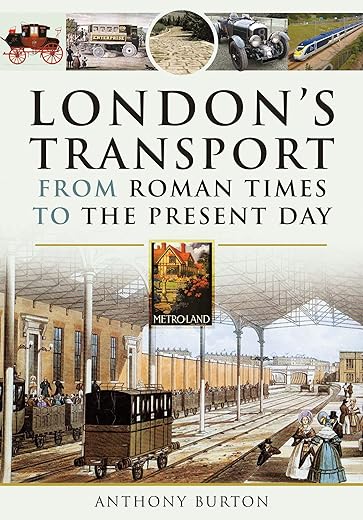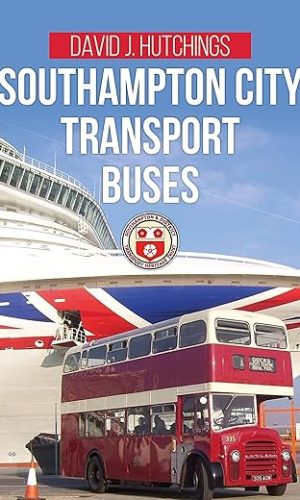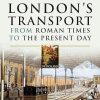London’s Transport From Roman Times to the Present Day
£22.60
Transport systems are the lifeblood of all great cities and this is certainly true of London. As far back as Roman times, their city Londinium was the hub of a network of roads leading out to all the major centres of the time. It was the Romans who gave the city its first bridge across the Thames and its first paved roadways. This book tells the story of London’s roads and bridges and the vehicles that used them. For centuries, transport meant horse drawn vehicles, from lumbering waggons to elegant carriages and the city had a flourishing industry, building carriages. The Industrial Revolution brought major changes, not least in the construction of more and more bridges over the Thames. In the 19th century a new system appeared with the arrival of the railways, and the many stations that are such prominent features of the cityscape. The story continues into the 20th century, when, for a time, the city was also home to some pioneering motor car manufacturers, such as Vauxhall. It comes nearer our time with the construction of the underground railway and the driverless trains of the Dockland Light Railway. Londoners will have a chance to find out just how travel around the city has changed in the last two thousand years.
Read more
Additional information
| Publisher | Pen & Sword Transport (15 Sept. 2022) |
|---|---|
| Language | English |
| File size | 200184 KB |
| Text-to-Speech | Enabled |
| Screen Reader | Supported |
| Enhanced typesetting | Enabled |
| X-Ray | Not Enabled |
| Word Wise | Not Enabled |
| Sticky notes | On Kindle Scribe |
| Print length | 178 pages |








by CPE
London’s Transport From Roman Times to the Present Day by Anthony Burton covers most forms of transport: cars and buses on roads; trams and trolley-buses; overground and underground railways; and planes. However, I didn’t feel any of the chapters were really focussed on London, other than Chapter 3 about bridges and tunnels crossing the Thames and 6 on the Underground. There is interesting material describing the suspension of early carriages and how steam engines work, but neither topic is specific to London.
I expected a lot more about licencing by the various forms of local and central government and the hostility between London boroughs. The chapter on road transport states “Trevithick made no further attempts to build steam vehicles to run on roads.” However, others did – there’s no mention of Goldsworthy Gurney. There could be a lot more about horse-drawn omnibuses and the battles for custom by competing companies. Overall, I felt that was a lightweight overview of general transport history – there’s nothing wrong with it, but it doesn’t particularly add anything to the historiography and, apart from London bridges and the Underground, it doesn’t tell me much about London. It’s a shame the book wasn’t delayed so that the author could cover the Elizabeth Line so at least there would be something new.
The short list of nine books listed in the Further Reading section includes British Transport by Dyos and Aldcroft, published in 1969. I assume that’s their British Transport – an Economic Survey from the Seventeenth Century to the Twentieth. Surprisingly, Burton doesn’t mention Barker and Robbins’ A History of London Transport: two volumes comprising a total of 964 pages – now that’s a detailed history!
#LondonsTransportFromRomanTimestothePresentDay #NetGalley